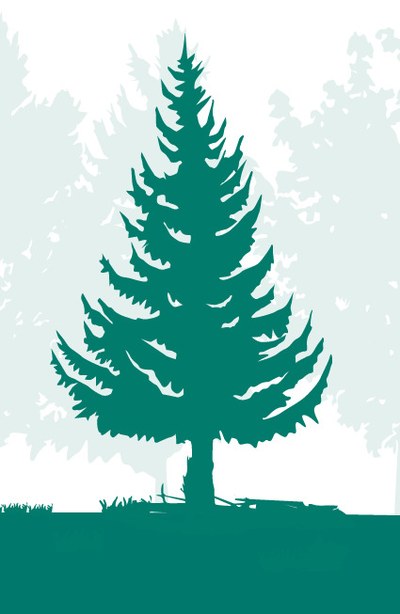All official European Union website addresses are in the europa.eu domain.
See all EU institutions and bodiesHarvesting is just one of many activities that can be planned within a forest management system. Harvesting regimes are interventions at maturity that allow the opening of canopies, permitting improved wood quality, regeneration of the stand and development of new trees.
Rotation length
In actively managed forests, rotation length (or felling age) is typically significantly shorter than the potential lifespan of a tree species. The length of the rotation is often based on the growth period required to derive a maximum value from a forest stand. The calculation of this period is specific to each forest and its tree species, and the management goals. For example, to maximise the economic return from wood production, conserve biodiversity, and provide protective functions.
Potential lifespan and typical felling age of economically significant and widespread tree species in Europe
The potential lifespan of tree species is affected by climate, soil quality, abiotic and biotic events, and competition, among other factors.

Scots pine
Potential lifespan: >200 years
Common fellling age: 80-100 years

Pedunculate or Sessile oak
Potential lifespan: >400 years
Common felling age: 110-150 years

Norway spruce
Potential lifespan: >200 years
Common felling age: 80-100 years

European beech
Potential lifespan: >400 years
Common felling age: 100-130 years
Some species, often labelled as pioneer species, are characterized by fast, early growth rates, limited shade tolerance and short life expectancy. Other species are late-successional species that need shade to regenerate and have slow, early growth rates and longer lifespans.
Harvesting regimes
There are different silvicultural systems and practices. For example, in clearcuts, the canopy layer is (almost) entirely removed, resulting in an even-aged forest. Although this is convenient for automation of timber collection and other industrial processes, the action of a large-scale clear cut has a massive impact on the soil, and ecosystem all at once - especially when combined with root and stump removal. These actions drain soil carbon, and impact biodiversity and future regeneration.
In other systems, such as the shelterwood system and group selection, the canopy may be removed in two or more successive fellings, which results in the future stand developing under the shelter of the old stand. Multiple consecutive small-scale and single tree selection cuttings promote continuous forest cover. This harvesting practice can improve the forest’s resilience to pests and disease as it creates a stand of mixed ages. Information on the harvested volumes can be found under the market and society topic.
Clear cutting
In a clear-cutting regime, the forest stands are completely cleared and then regenerated.
Shelterwood regime
The shelterwood regime can encompass a wide variety of systems. Not all trees are harvested on the stand, creating more than one forest layer.
Group selection
In this system, harvesting a group of trees in a spot creates gaps in the canopy and allows smaller areas to regenerate.
Single tree and group selection
In single tree and group selection systems, scattered single trees or small groups of trees are selected over the whole area and removed.
Sanitary logging to minimize the risk of disturbances
Removing dead, diseased or damaged trees, known as sanitation logging, aims to reduce the risk of disturbances or the spread of pests and diseases. However, the overall efficacy of the practice is still being debated in scientific literature. During harvesting, other practices like applying pesticides or fungicides to remaining trees and/or tree stumps can also prevent the further spread of insects, pathogens and harmful fungi.
Post-disturbance management depends on the type of disturbance. The most broadly applied post-disturbance forest management is salvage logging. Salvage logging is the felling and removal of trees in naturally disturbed forests, to recoup economic losses, reduce hazards to infrastructure and ensure human safety. It is used in the case of windstorms, wildfires and insect outbreaks. Salvage logging also prevents further disturbances, such as bark beetle outbreaks in Norway spruce forests after a windstorm or severe drought.
Salvage loggings can vary throughout the years and between countries
